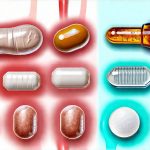Bladder irritation can be a profoundly disruptive experience, impacting daily life in ways many people don’t anticipate. Frequent urges, painful burning sensations, and the constant worry about accidents are just some of the challenges those with sensitive bladders face. While numerous factors can contribute to bladder sensitivity – including infections, neurological conditions, and certain medications – dietary choices often play a surprisingly significant role. Many individuals find that modifying their diet, specifically by reducing intake of irritating substances, can lead to substantial symptom relief. Understanding this connection is the first step toward regaining control and improving quality of life.
This article will focus on one particular aspect of dietary modification: minimizing salt intake. It’s easy to underestimate how much sodium we consume daily, often hidden in processed foods and seemingly innocuous condiments. Excessive salt can exacerbate bladder irritation by drawing water into the body, increasing urine production and putting extra stress on the bladder walls. This isn’t about eliminating salt entirely – that’s unrealistic and unnecessary for most people – but rather adopting mindful habits to reduce overall consumption and support a healthier, calmer bladder. We’ll explore why this works, how to identify hidden sources of sodium, and practical strategies for building low-salt food habits.
The Science Behind Salt and Bladder Irritation
The link between high salt intake and increased bladder irritation isn’t immediately obvious, but the physiological mechanisms are fairly straightforward. When we consume a lot of sodium, our bodies naturally try to maintain fluid balance. To do this, water is retained, increasing overall body hydration. While adequate hydration is essential for health, excess fluid volume directly translates into more urine production. A bladder already struggling with sensitivity doesn’t have the capacity to comfortably handle increased volumes. This leads to those familiar urgent and frequent urges we associate with bladder issues.
Furthermore, concentrated urine – often resulting from dehydration between high-sodium bursts – is itself a bladder irritant. The higher concentration of waste products can cause inflammation and discomfort. It creates a vicious cycle: you drink more because you’re thirsty from the sodium intake, your bladder fills rapidly, then you potentially become dehydrated again as the fluids are processed, leading to concentrated urine and further irritation. Reducing salt is about stabilizing fluid balance, not eliminating water altogether. If you want to learn how to best manage hydration alongside dietary changes, exploring hydration tracking habits can be beneficial.
Finally, some research suggests that high sodium levels can directly impact the nerves controlling bladder function, making them more sensitive and reactive. It’s a complex interplay of hydration, nerve sensitivity, and overall bladder capacity, all influenced by our dietary choices. This makes understanding – and managing – salt intake crucial for those seeking relief from bladder irritation symptoms.
Identifying Hidden Sodium Sources & Making Swaps
Many people associate high sodium with adding salt to their meals, but the vast majority of our sodium intake comes from hidden sources in processed foods. These are often unexpected and can quickly add up throughout the day. Common culprits include: – Canned soups and vegetables – Processed meats (bacon, sausage, deli meats) – Frozen dinners – Fast food – Packaged snacks (chips, pretzels, crackers) – Condiments like soy sauce, ketchup, and salad dressings – even seemingly healthy ones!
Becoming a label reader is your first line of defense. Pay attention to the “Sodium” content per serving size, but also consider the serving size itself. A food item might list a moderate amount of sodium, but if the serving size is tiny, you’re likely consuming much more in reality. Look for “low sodium” or “reduced sodium” options whenever possible. However, even these can contain significant amounts, so careful comparison is key.
The good news is there are often easy swaps you can make: – Replace canned soup with homemade broth-based soups using fresh vegetables. – Choose fresh meats over processed varieties. – Opt for frozen vegetables without added salt or sauces. – Season your food with herbs and spices instead of relying on salty condiments. – Experiment with flavors like garlic, onion powder, paprika, pepper, and chili flakes. These can add depth and complexity without the sodium. Ultimately, cooking more meals from scratch gives you complete control over the ingredients and allows you to significantly reduce your salt intake. To help streamline this process, consider reviewing smart food prep habits that minimize bladder disruption.
Building Low-Salt Food Habits: Practical Steps
Adopting a low-salt diet isn’t about deprivation; it’s about mindful choices and gradual changes. Here are some practical steps you can take to integrate these habits into your daily life: 1. Start slowly: Don’t try to overhaul your entire diet overnight. Begin by focusing on one or two areas, like reducing your use of condiments or swapping out processed snacks for healthier alternatives. 2. Rinse canned foods: If you must use canned vegetables or beans, rinse them thoroughly under running water to remove excess sodium. This can reduce the sodium content by up to 40%. 3. Cook at home more often: This allows you to control ingredients and seasoning levels. Experiment with recipes that emphasize fresh flavors and minimize added salt.
Don’t underestimate the power of planning. Meal prepping – even just for a few days at a time – can help you stay on track and avoid impulsive, high-sodium choices when you’re busy or tired. When eating out, ask your server about sodium content in dishes and request modifications if possible (e.g., dressing on the side, no added salt during cooking). Remember that taste buds adapt over time. What initially tastes bland without a lot of salt will gradually become more satisfying as your palate adjusts to lower sodium levels.
Hydration & Bladder Sensitivity: Finding the Balance
While reducing salt intake helps regulate fluid balance, adequate hydration remains crucial for bladder health – but it’s about finding the right balance. Drinking too little can lead to concentrated urine and irritation, while drinking excessive amounts (especially if combined with high sodium) overwhelms the bladder. The optimal amount of water varies depending on individual factors like activity level, climate, and overall health.
A good starting point is to aim for around 6-8 glasses of water per day, but pay attention to your body’s signals. Monitor your urine color – pale yellow indicates adequate hydration, while dark yellow suggests you need to drink more. Spread your fluid intake throughout the day rather than gulping down large amounts at once. And remember that fluids come from sources other than just water, including fruits, vegetables, and soups (low-sodium ones!). For those looking for a holistic approach beyond diet, longer term food plans can be very helpful.
Beyond Salt: Holistic Bladder Support
Reducing salt is a valuable step, but it’s important to recognize that bladder irritation often requires a holistic approach. Several other dietary factors can contribute to sensitivity, including caffeine, alcohol, artificial sweeteners, spicy foods, and acidic fruits/vegetables (citrus, tomatoes). Identifying your personal triggers – which may differ from others – is key.
Consider keeping a food diary to track what you eat and drink alongside your bladder symptoms. This can help pinpoint specific items that seem to exacerbate your irritation. Additionally, exploring stress management techniques like yoga, meditation, or deep breathing exercises can be beneficial, as stress can often worsen bladder symptoms. Breathwork for relaxation is also a helpful tool to manage tension. It’s essential to remember this information is for general knowledge only and does not substitute professional medical advice. If you’re experiencing persistent or severe bladder issues, consult with a healthcare provider to determine the underlying cause and develop an appropriate treatment plan.





















